Adaptive marking with Numbas
Christian Lawson-Perfect, Newcastle University. @NclNumbas
Hi
Christian Lawson-Perfect,
School of Mathematics and Statistics,
Newcastle University.
I've been working on Numbas as its lead developer since 2011.
What is Numbas?
Numbas is an open-source system developed by the e-Learning Unit of Newcastle University's School of Maths and Stats, based on many years of use, experience and research into e-assessment.
It's aimed at numerate disciplines.
It creates SCORM-compliant exams which run entirely in the browser, compatible with VLEs such as Blackboard and Moodle.
History
Numbas follows the CALM model.
At Newcastle, we used the commercial system i-assess for six years before switching to Numbas.
Development began in 2011 with the aim of replacing i-assess.
Design goals
- Scalable, reliable and accessible to a broad range of users.
- Good at maths, but usable for other subjects too.
- Good-looking and easy for students to use.
- Used by question authors who aren't experts.
- Emphasis on creating rich formative e-assessment and learning materials.
- Feedback an important part of the design and implementation.
Usability
For students
The interface is clean, and accessible by screen readers. Feedback is immediate.
Tests run on any device - desktop, tablet, mobile - with a responsive design.
Over several years, and based on student feedback, the interface has improved.
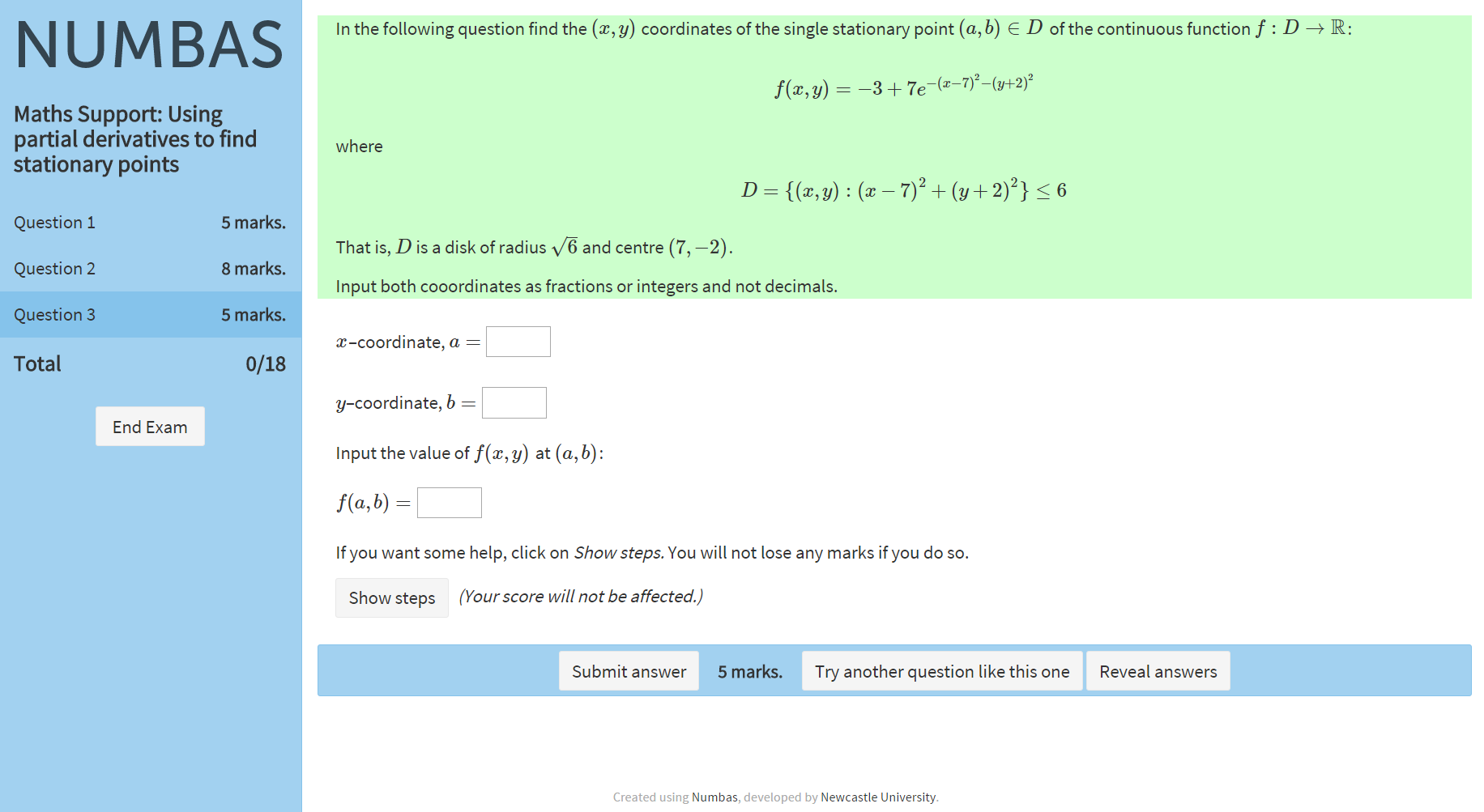
Usability
For authors
Using the graphical editor, you can create a simple question with no previous knowledge.
Gradually add more complicated elements, such as LaTeX maths notation.
Can test run questions immediately.
Template questions make customising existing material easier.
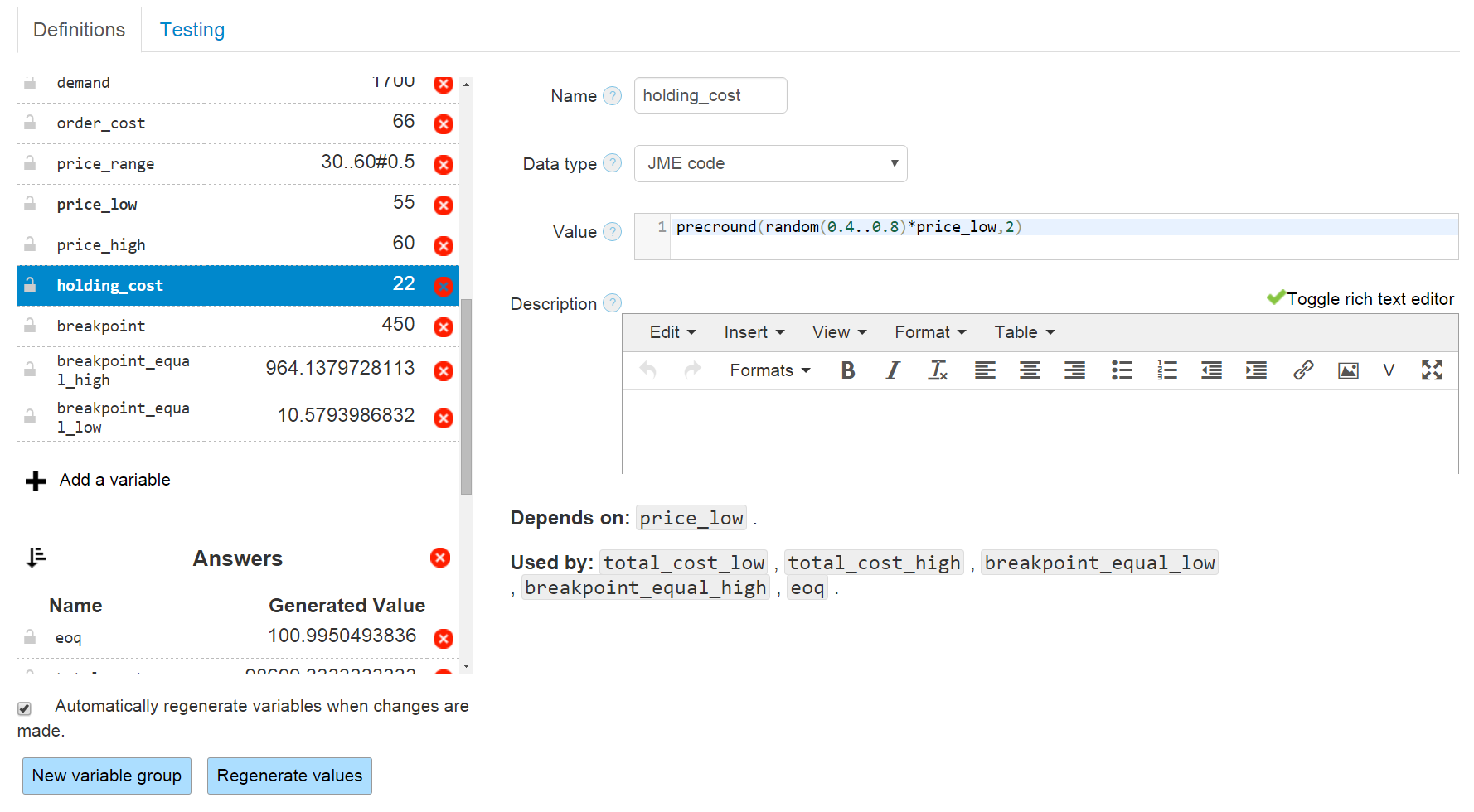
Integration with a VLE
Numbas uses the SCORM 2004 standard to integrate with compliant VLEs, such as Moodle and Blackboard.
Or you can use it without a VLE.
Customisation

A large driver for Numbas was the lack of customisability in previous systems.
Interface and logic are completely separated in Numbas - custom themes can change the look of tests, or reimagine how they're run.
Extensions allow the addition of new functions, data types, and resources.
Formative vs summative use
Computer-aided assessment is great for formative assessment.
Students can try randomised questions over and over until they're happy.
Summative assessment poses problems:
- How to prevent cheating?
- Can you ask the right sort of questions for a high-stakes summative exam?
Open access
Compiled Numbas tests are SCORM packages: they're completely self-contained. Perfect for open access resources.
We want to establish a community of authors and users producing quality open-access material.
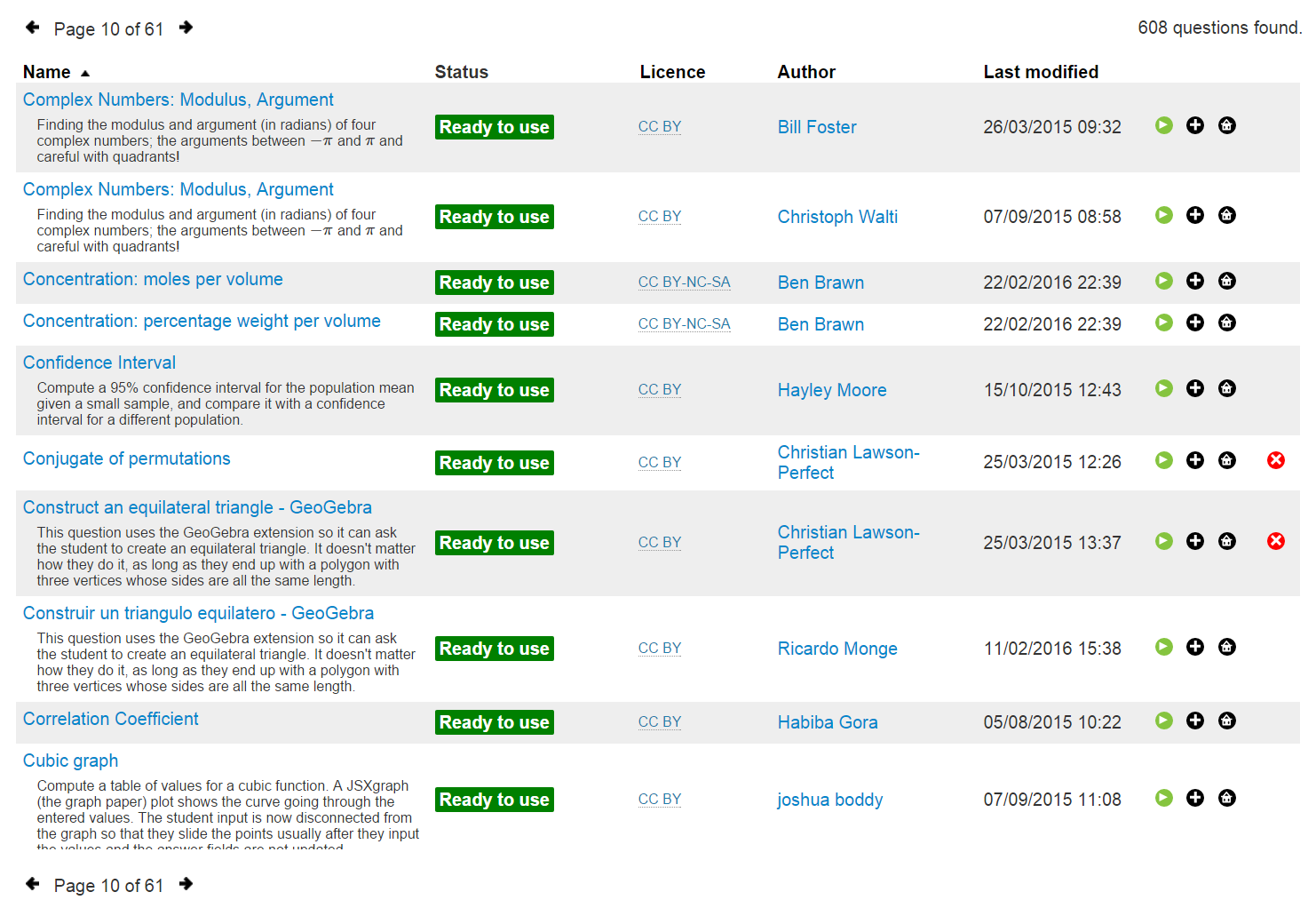
Complexity of questions
Most high school or undergrad maths questions are easily implemented in Numbas.
Randomising questions can be hard, and marking can be hard - but Numbas makes it easier.
Variable generation
Variables are generated declaratively; variables can build on other variables.
The definition interface allows you to work interactively: see generated values immediately, and test for properties.
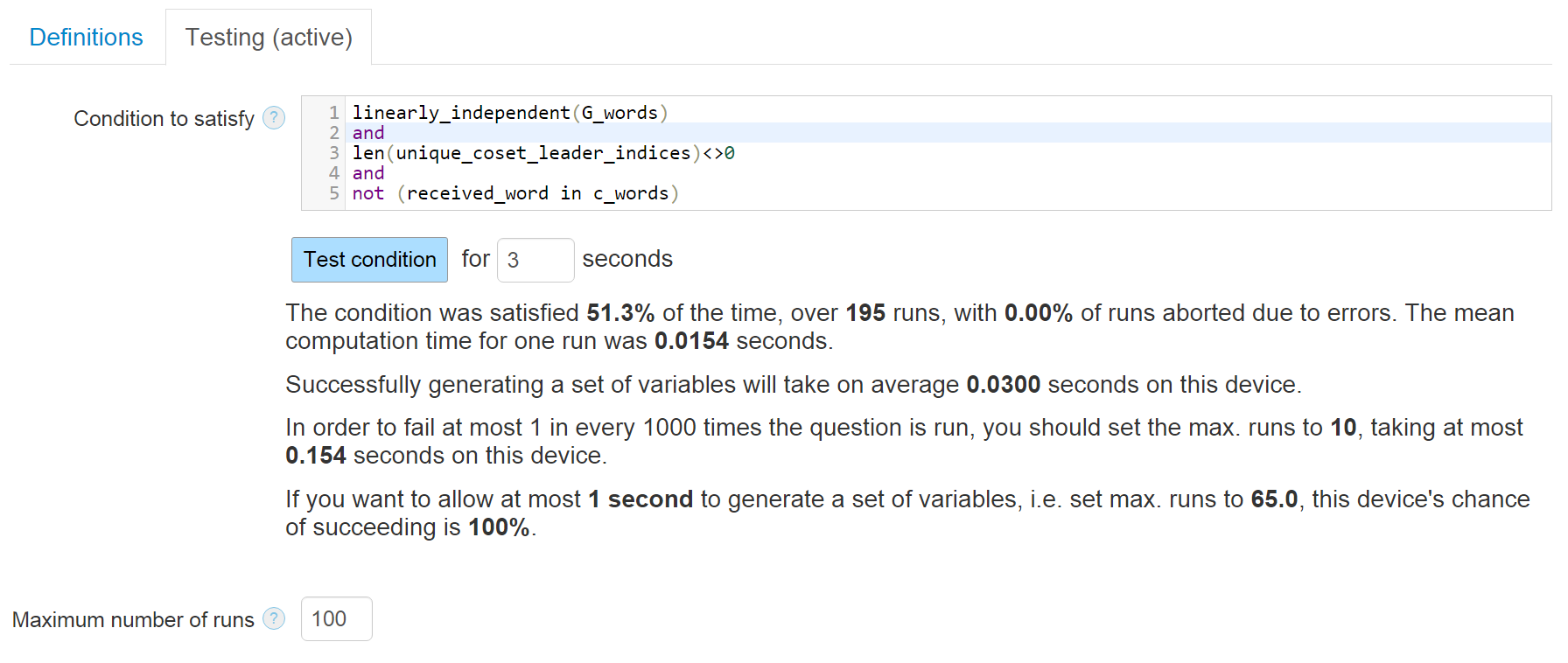
Adaptive marking
Students kept asking for error-carried-forward marking.
This is complicated to implement, and doubly so when questions are randomised.
Adaptive marking
Solution: when marking a part, replace some question variable(s) with the student's answers to previous parts.
A new "correct" answer is automatically calculated.
It works surprisingly well!
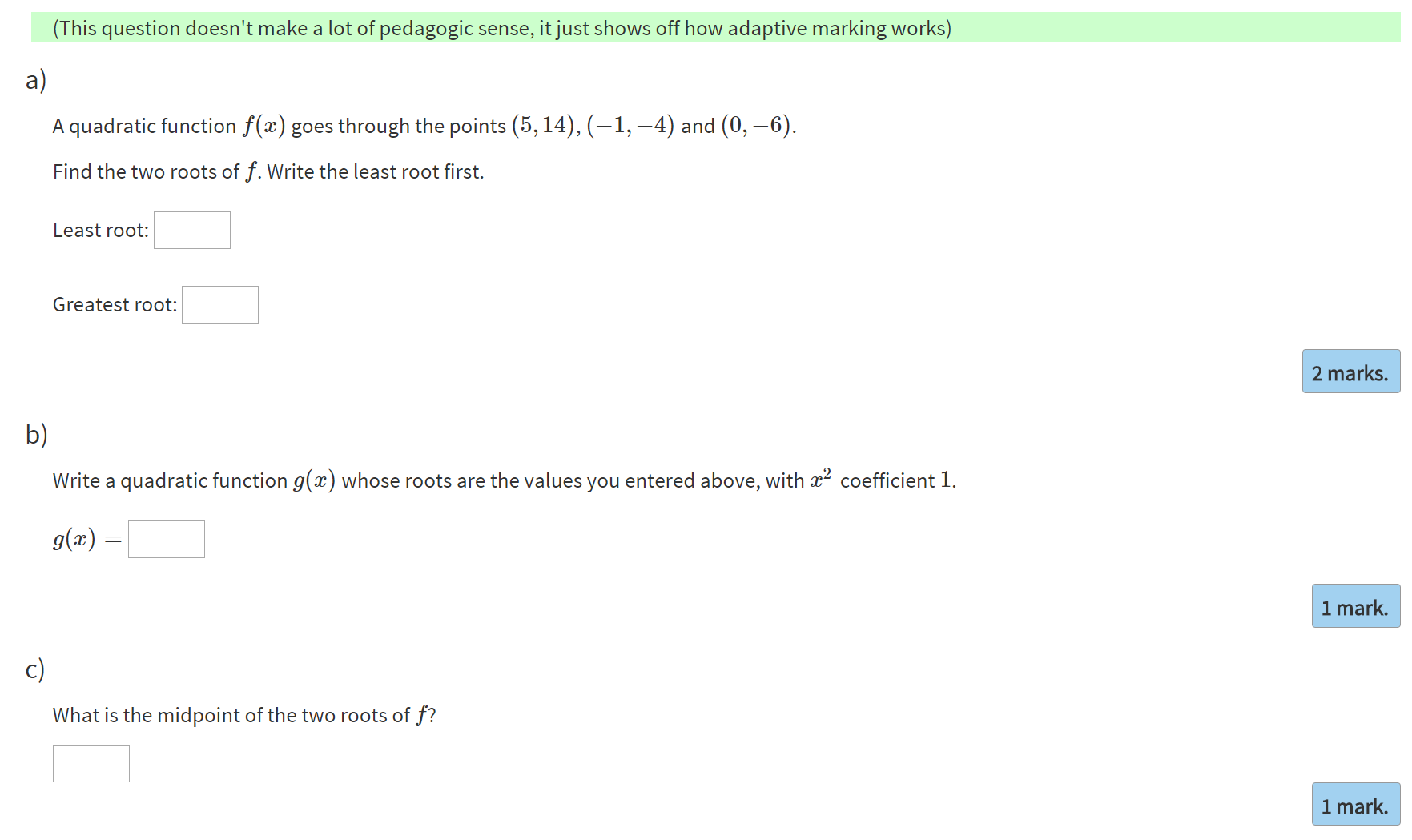
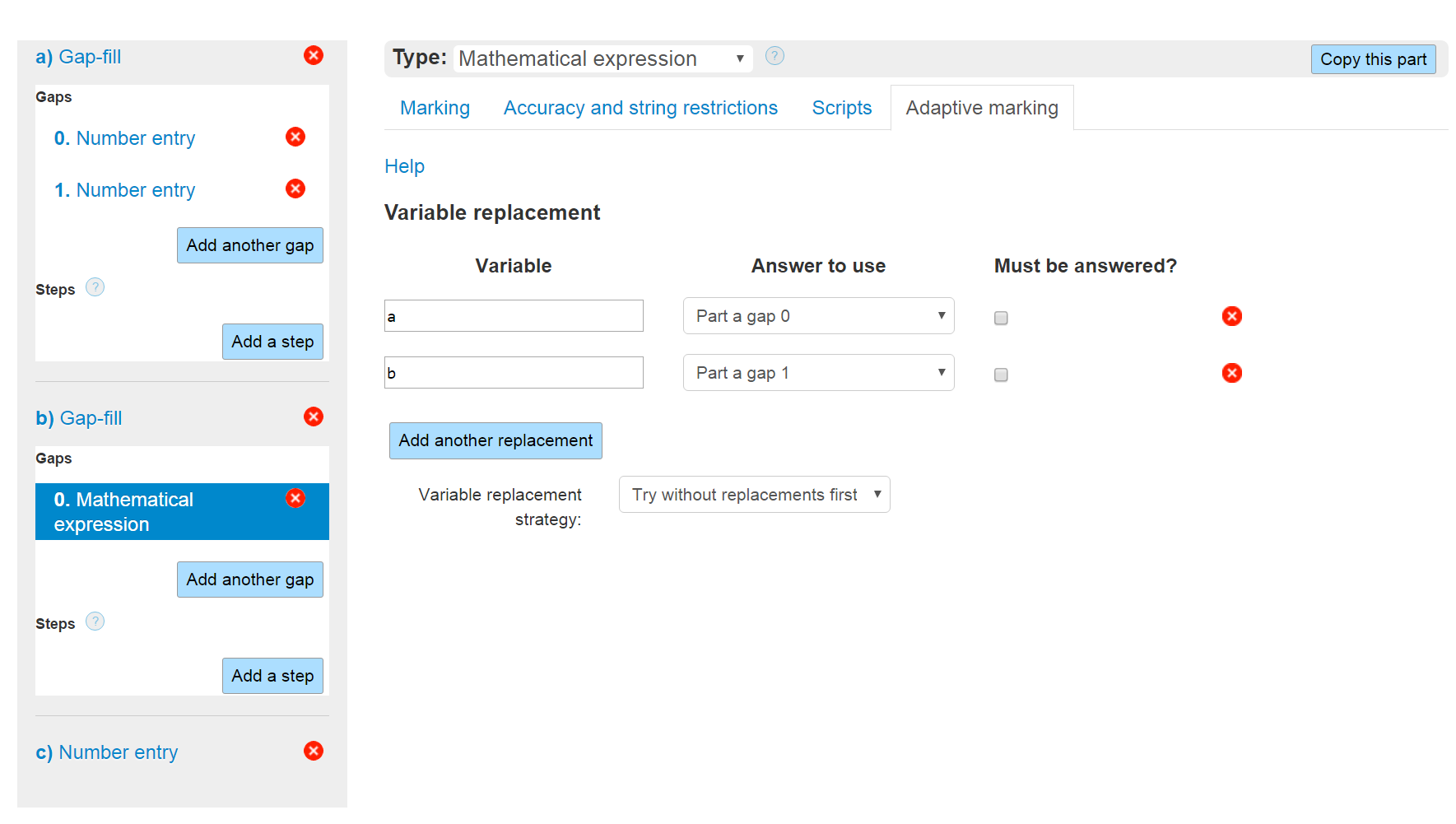
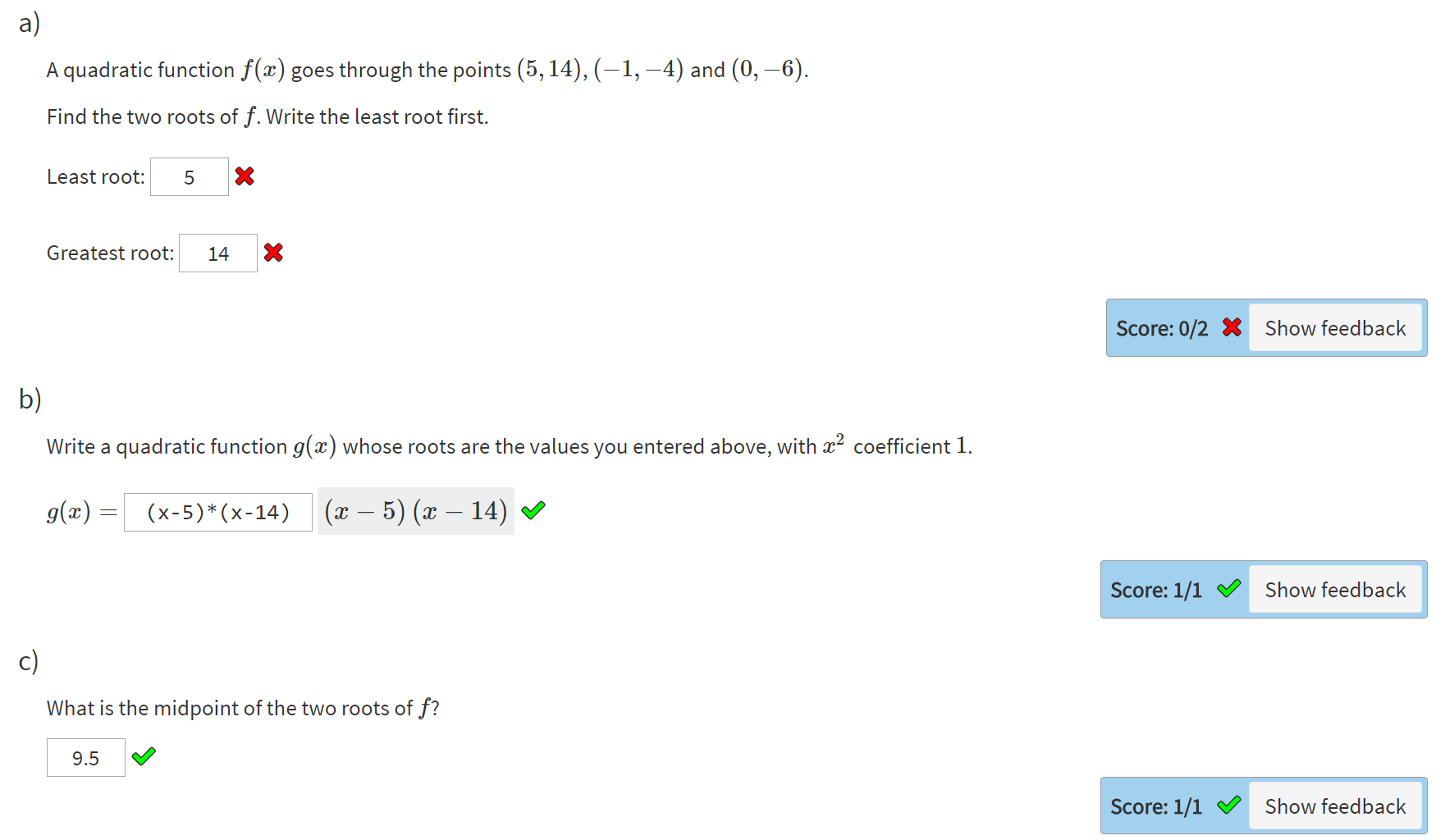
Demo
Thanks!
Website
Contact
- Email: numbas@ncl.ac.uk
- Twitter: @NclNumbas